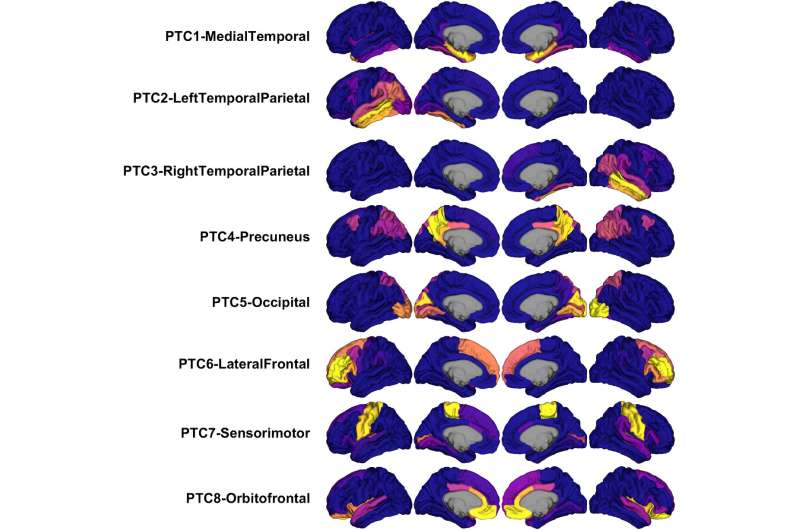This article has been reviewed according to Science X's editorial process and policies. Editors have highlighted the following attributes while ensuring the content's credibility:
fact-checked
peer-reviewed publication
trusted source
proofread
New method uses tau protein deposition patterns to predict Alzheimer's severity

Researchers at Washington University School of Medicine in St. Louis have devised a method to gauge Alzheimer's disease severity by analyzing the patterns of tau pathology in brain scans. The findings could lead to a way to determine how far the disease has progressed in individuals, which could help guide treatment decisions.
The accumulation and spread of tau protein throughout the brain is a key process underlying Alzheimer's pathology. Led by Aristeidis Sotiras, an assistant professor of radiology at the School of Medicine's Mallinckrodt Institute of Radiology and a faculty member of the Institute for Informatics, Data Science & Biostatistics, and Tom Earnest, a graduate student in the Division of Computational & Data Sciences, the researchers used unsupervised machine learning to analyze tau deposition data from brain scans of patients with Alzheimer's. They identified eight patterns of tau deposition that correlated with clinical and cognitive outcomes and created a model linking tau deposition patterns with Alzheimer's disease severity.
The study is published in Alzheimer's and Dementia.
"We sought to find an innovative way to monitor tau pathology in Alzheimer's, and to make a model based on tau deposition patterns that could be applied to future patients," Earnest said. "The earlier doctors can intervene, the better chance they will have of slowing the cognitive decline associated with Alzheimer's."
More information: Tom Earnest et al, Data‐driven decomposition and staging of flortaucipir uptake in Alzheimer's disease, Alzheimer's & Dementia (2024). DOI: 10.1002/alz.13769




















